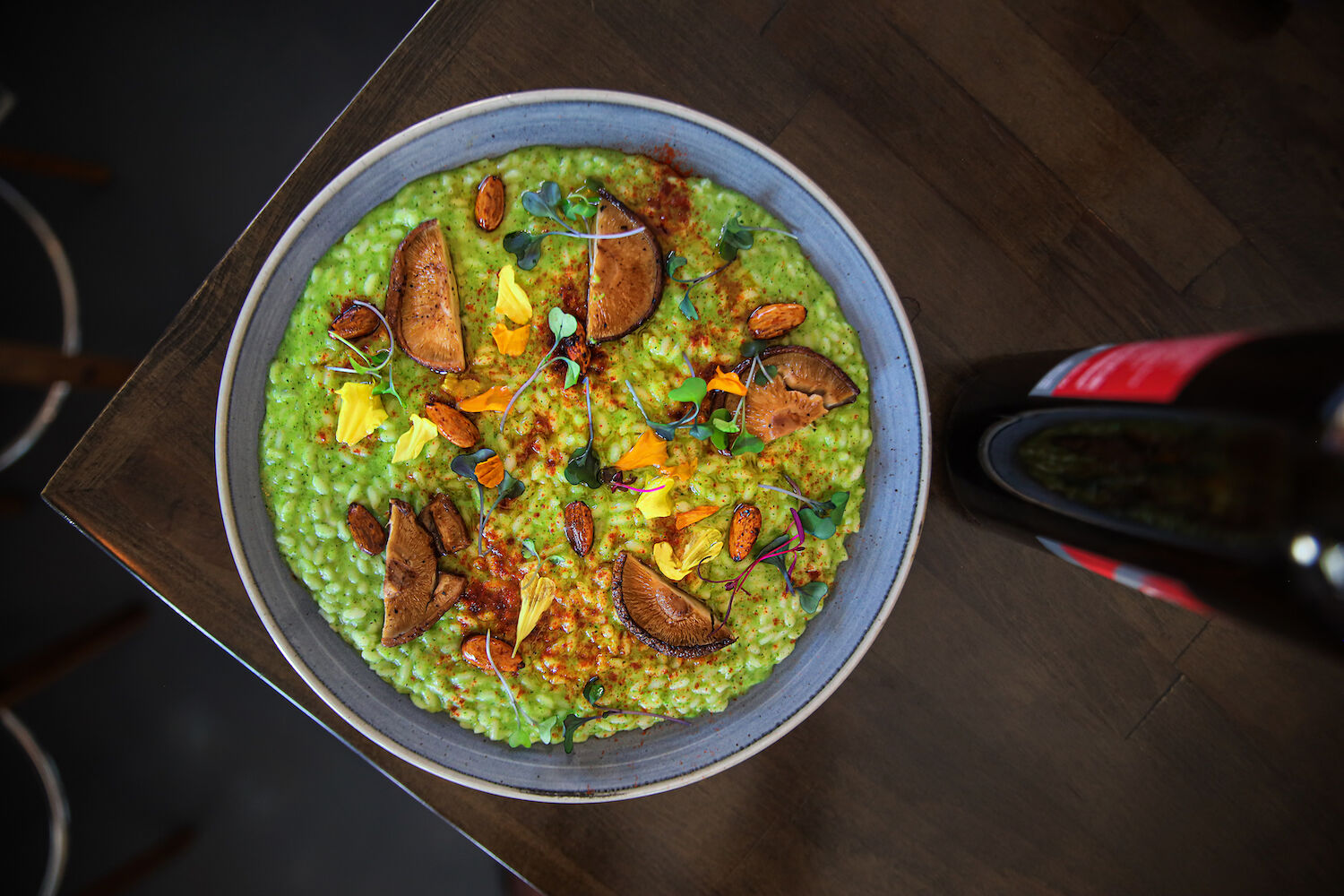
Civico 1845
Civico 1845
Let’s be honest. Plant-based cooking in some states is a pretty grim experience, bordering on an ordeal (i.e. South Dakota, where not much grows except cows). But San Diego is the “farm” in farm-to-table (very literally—my editor tells me that when Alice Waters and Jeremiah Trotter and Wolfgang Puck were starting the movement in California, the farm they often pulled from was Chino in Rancho Santa Fe). San Diego’s weather and soil yields an unnaturally long growing season that blows the mind of any recently transplanted chef. Plus, San Diego County’s more than 5,000 farms rank tops of any county in the U.S.
End result? An infinite array of vegetables. And better ones. Now that it’s summer, we’re talking peak plant—with stone fruits, strawberries, tomatoes, oranges, you name it.
Even so… and no matter how far the plant-based arts have come, there is still a stubborn resistance movement among some San Diegans.
“They automatically think no cheese, no butter, no meat, means no flavor,” says Pietro Gallo, executive chef of Civico 1845 in Little Italy. “It really all comes down to salt, seasoning and sauces, just like any carnivorous dish.” The Italian restaurant relaunched its vegan menu in May (an Italian restaurant with a full vegan menu is still a rarity), adding dishes like linguine al verde, topped with spinach pesto, marinated red beets, zucchini, lemon zest, and roasted hazelnuts.
On behalf of the reticent omnivores, I sought the advice of Gallo and other San Diego plant-based specialists on how to eat more plant-based at home, while still being excited about eating as a human practice.
Tip One: Soak Your Veggies
Olive oil, balsamic vinegar, and citrus. Bathe those veggies—all of that marinating will inject them with a ratcheted-up flavor and natural fats. “Give your vegetables time to absorb those flavors and they completely transform into something new and delicious,” Gallo says. “There is a lot of citrus in Calabrian cooking in general.”
Tip Two: Shop Local, Duh
Having access to some of the world’s best fruits and vegetables, do the logical thing and ascertain them. Even the most average cuts of meat will taste pretty delicious thanks to the presence of fat. But no marinade can salvage bad veggies (for instance, tomatoes that are picked unripe in Florida, packed onto trains, gassed to ripen, and landing in California weeks later). Plants start to deteriorate in flavor and nutrients the second they’re plucked from the ground, so the best plants are obviously at farmers markets—scattered all across the county, from Oceanside to Imperial Beach. That’s the key to the main dishes and vegan baked goods at plant-forward Parakeet Cafe, says co-owner Carol Roizen. Like the just-dense-enough vegan banana oat muffin, which are indistinguishable from the traditional versions.
Tip Three: Spice It Up
The spice rack is the cook’s toolbox. Lean into it, especially with plants. Also, get fresh herbs which taste far more “alive” and fresh. Powerhaus Pizza in Pacific Beach specializes in high-protein and alternative pizza crusts like whole-grain with ground flax and plant protein. And owner Anisha Blodgett and her team use a healthy amount of fresh basil, garlic, and lemon juice. For their Margherita pizza, she doesn’t just use basil—she covers the entire pie with it.
Tip Four: Texture, Texture, Texture
When cooking at home, I use pepitas (pumpkin seeds) on everything, from egg and cheese breakfast tacos with a squeeze of Sriracha to oatmeal. “I like using different kinds of nuts, like sunflower or pumpkin seeds, sprinkling on different textures and adding to the flavor profile,” Blodgett says. Readers can also roast veggies for a crispier texture, puree for silkiness, hand-mash for somewhere in between.
Tip Five: Keep It Simple
PARTNER CONTENT
Roizen saves her simplest and most salient point for last.“Start with the food that you already love,” she suggests—then add plants. “For example, if you love lasagna, maybe find a recipe to make it with mushrooms instead of meat, you might be surprised how good it tastes.”



















